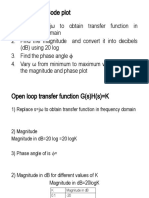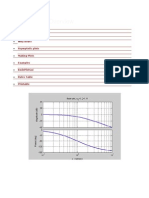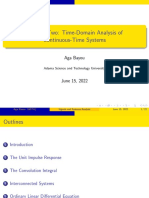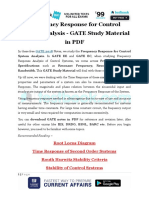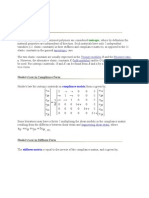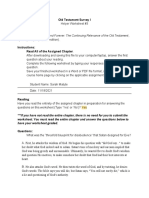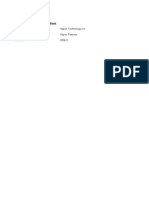0% found this document useful (0 votes)
232 views12 pagesBode Plot Basics
The document discusses Bode plots, which are used to analyze the frequency response of systems. It defines Bode plots as semilog plots of a transfer function's magnitude and phase angle versus frequency. Straight line approximations can be drawn on Bode plots based on the locations of poles and zeros. Examples are provided to illustrate how to construct Bode plots from a system's transfer function and extract the transfer function from a given Bode plot.
Uploaded by
Ananiah DuraiCopyright
© © All Rights Reserved
We take content rights seriously. If you suspect this is your content, claim it here.
Available Formats
Download as PPT, PDF, TXT or read online on Scribd
0% found this document useful (0 votes)
232 views12 pagesBode Plot Basics
The document discusses Bode plots, which are used to analyze the frequency response of systems. It defines Bode plots as semilog plots of a transfer function's magnitude and phase angle versus frequency. Straight line approximations can be drawn on Bode plots based on the locations of poles and zeros. Examples are provided to illustrate how to construct Bode plots from a system's transfer function and extract the transfer function from a given Bode plot.
Uploaded by
Ananiah DuraiCopyright
© © All Rights Reserved
We take content rights seriously. If you suspect this is your content, claim it here.
Available Formats
Download as PPT, PDF, TXT or read online on Scribd
/ 12
